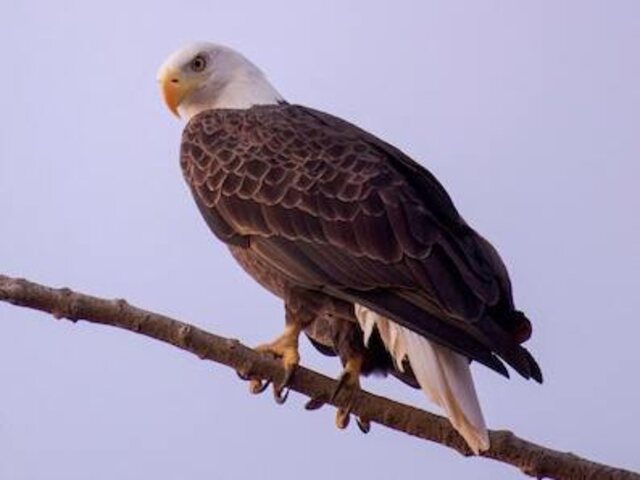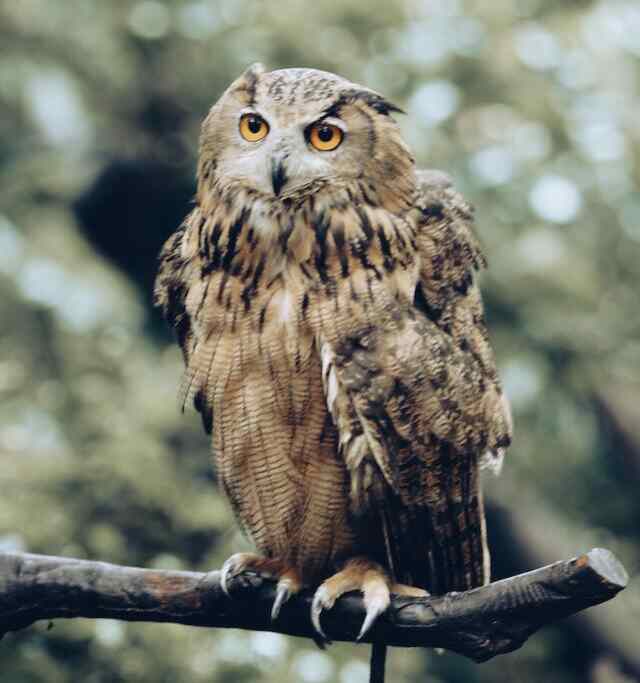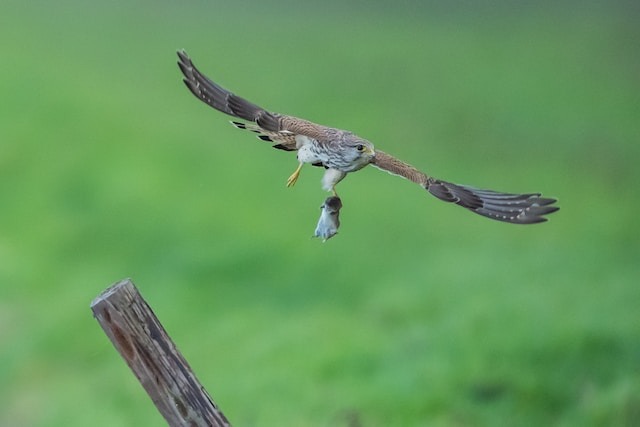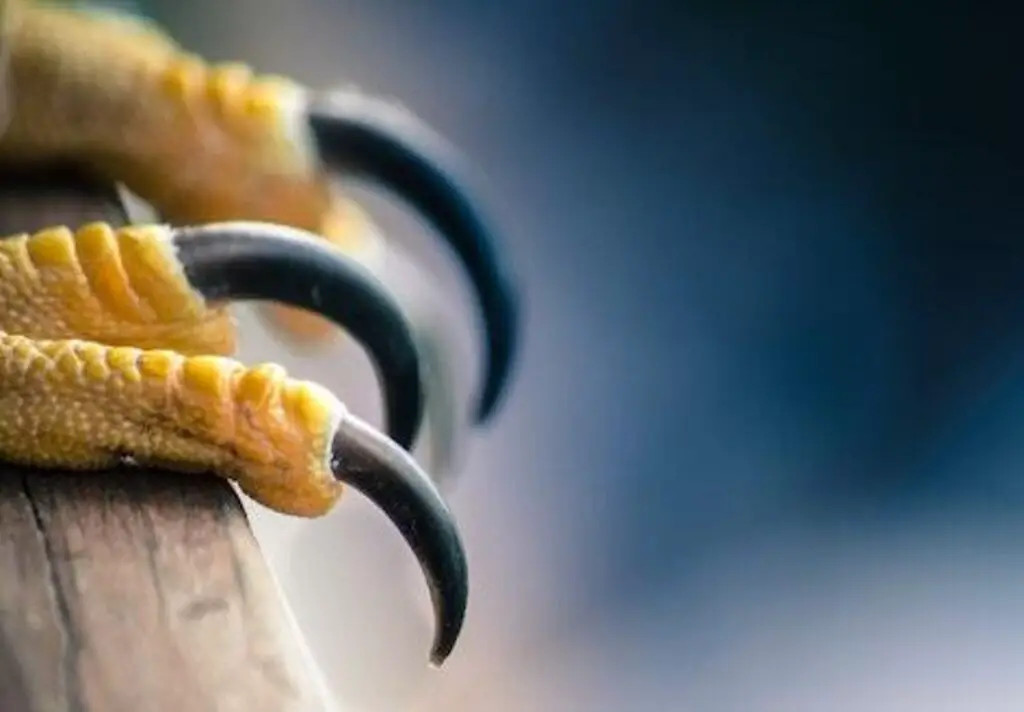Bird talons, the stealthy assassins of the animal kingdom, showcase the remarkable ingenuity of evolution. This article explores the captivating world of bird talons, delving into their types, structure, and function.
With specialized adaptations, these formidable appendages allow birds to navigate ecological landscapes, fulfill physiological needs, and employ intricate hunting strategies.
From the diverse array of talon adaptations to the ingenious techniques employed by avian predators, this article unveils the fascinating realm of courtship and mating, where talons establish dominance and ensure reproductive success.
Additionally, it sheds light on talon injuries, highlighting rehabilitation and conservation efforts dedicated to protecting these remarkable appendages.
Through scientific examination and objective analysis, this article aims to provide readers with a comprehensive understanding of bird talons.
By appreciating their intricate beauty and functional significance, we can marvel at the wonders of nature’s lethal weaponry.
Table of Contents
- 1 Key Takeaways
- 2 Types of Bird Talons
- 3 Structure and Anatomy of Bird Talons
- 4 Function of Bird Talons
- 5 Diversity of Talon Adaptations
- 6 Unique Talon Features
- 7 Examples of Birds with Impressive Talons
- 8 Hunting Techniques and Strategies
- 9 Talons in Courtship and Mating
- 10 Talon Injuries and Rehabilitation
- 11 Conservation and Legal Protection
- 12 Frequently Asked Questions
- 13 Conclusion
- 14 Author
Key Takeaways
- Bird talons are diverse and specialized adaptations for hunting and navigating ecological landscapes.
- Talon size and shape vary among bird species, reflecting their specific ecological niches and hunting strategies.
- Talons serve multiple functions, including grasping prey, communication, and courtship displays.
- Conservation efforts are needed to protect bird talons from threats such as habitat loss, pollution, climate change, and illegal trade.

Types of Bird Talons
There are various types of bird talons, each adapted to different hunting strategies and prey. The adaptations for grasping and talon evolution have led to a wide range of talon structures among bird species.
Raptors, such as eagles and hawks, have strong, sharp talons with curved tips that enable them to grasp and hold onto their prey securely.
These talons are specialized for capturing and killing animals, often larger than the birds themselves.
In contrast, smaller birds, like songbirds, have slender, pointed talons that are used for perching and navigating branches.
These talons are not designed for capturing prey, but rather for stability and movement.
Understanding the structure and anatomy of bird talons is essential for comprehending their functionality and the ways in which they have evolved to suit different ecological niches.
Structure and Anatomy of Bird Talons
The structure and anatomy of bird talons are characterized by sharp and curved claws, which are essential for capturing and gripping prey.
These specialized appendages allow birds to effectively grasp and hold onto their food sources. Additionally, many bird species possess retractable talons, which can be extended or retracted as needed.
This adaptability provides birds with greater agility and versatility in different environments, enabling them to navigate various terrains and capture prey more efficiently.
Sharp and Curved Claws
Sharp and curved claws, like the scythes of nature, enable birds to effortlessly grasp and secure their prey. These remarkable adaptations have evolved over millions of years to provide birds with the perfect tools for hunting and survival.
Here are four fascinating facts about bird talons:
- Evolution of bird talons: Bird talons have evolved from the ancestral dinosaur foot, adapting to meet the specific needs of birds. This evolutionary process has resulted in the development of sharp and curved claws that are ideal for catching and holding onto prey.
- Talon strength: Bird talons possess incredible strength, allowing birds to exert a powerful grip on their prey. This strength is achieved through the combination of robust muscles, specialized tendons, and a sturdy skeletal structure.
- Secure grip: The sharpness and curvature of bird talons enable them to securely grasp onto various surfaces, such as tree branches or the bodies of their prey. This ensures that the prey remains firmly in the bird’s grasp, preventing any chance of escape.
- Precision and control: Birds have exceptional control over their talons, allowing them to adjust their grip and apply just the right amount of pressure when capturing prey. This precision is essential for successful hunting and ensures that the bird can maintain its balance and maneuverability while carrying its catch.
Transitioning into the subsequent section about ‘retractable talons’, we can explore another fascinating aspect of bird talon adaptations.
Retractable Talons
Evolved over millions of years, the retractable nature of certain avian claws allows for enhanced versatility in capturing and securing prey.
Retractable claws are a remarkable adaptation found in various bird species, enabling them to switch between a curved, sharp talon position for catching and grasping prey, and a retracted position for perching and walking.
This ability is made possible by the specialized arrangement of tendons and muscles within the bird’s foot.
When the bird needs to use its talons, the tendons contract, extending the claws and locking them into place.
Conversely, when the talons are not needed, the tendons relax, allowing the claws to retract.
This retractable mechanism provides birds with greater agility and flexibility in different environments, enabling them to adapt to various hunting and perching situations.
Transitioning to the subsequent section about adaptations for different environments, the retractable nature of bird talons is just one of the many remarkable features that allow avian species to thrive in diverse habitats.
Adaptations for Different Environments
Adaptations for different environments in avian species include specialized beak shapes and sizes, with some birds possessing beaks that are strong enough to crack open nuts with a force of over 300 pounds per square inch.
In addition to beak adaptations, bird talons also play a crucial role in helping birds thrive in various habitats.
One important adaptation is talon size variation, where different bird species have evolved talons of varying lengths and thicknesses to best suit their specific environment.
For example, birds that inhabit dense forests may have shorter and thicker talons to provide a stronger grip on branches and prey.
On the other hand, birds that live in open grasslands may have longer and more slender talons to aid in capturing fast-moving prey.
Another adaptation is bird talon camouflage, where the coloration and patterning of the talons blend in with the surrounding environment, allowing the bird to remain hidden from both prey and predators.
These adaptations demonstrate the remarkable versatility of bird talons and their ability to enhance a bird’s survival in its particular habitat.
Transitioning into the next section, the function of bird talons goes beyond their adaptability to different environments.

Function of Bird Talons
Bird talons serve as formidable weapons, allowing birds to effectively grasp and immobilize their prey with precision and strength. These adaptations are essential for survival, as birds rely on their talons to capture and secure food.
Talon anatomy plays a crucial role in their function. The sharp, curved shape of the talons enables birds to pierce and hold onto their prey, preventing escape.
Additionally, the strong muscles and tendons surrounding the talons provide the necessary grip and power.
Different bird species exhibit a diverse range of talon adaptations, reflecting their specific ecological niches and hunting strategies.
Some birds have long, slender talons for catching fish, while others have shorter, stout talons for capturing small mammals or insects.
These variations in talon morphology highlight the incredible adaptability and versatility of birds in different environments.
Diversity of Talon Adaptations
The vast array of talon structures across different species showcases the remarkable diversity and specialized adaptations found within avian hunting strategies.
Talons have long been a subject of fascination in folklore, often associated with power, strength, and even mystical qualities.
From the curved and razor-sharp talons of raptors like eagles and hawks to the grasping talons of owls and the webbed feet of water birds, each species has evolved unique talon adaptations to suit their specific hunting needs.
Talons have evolved over time through a process of natural selection, resulting in a variety of shapes, sizes, and functions.
For instance, raptors have sharp, hooked talons for catching and gripping prey, while water birds have long, slender talons for wading and catching fish.
Understanding the diversity of talon adaptations provides valuable insights into the evolutionary history and ecological niche of different bird species.
Transitioning into the subsequent section about ‘unique talon features’, this exploration of talon diversity sets the stage for a closer examination of the specific adaptations that enable birds to excel in their hunting endeavors.
Unique Talon Features
One fascinating aspect of talon diversity lies in the unique features they possess. Talons have evolved to serve various functions, including communication and hunting.
Some bird species use their talons to communicate with others, such as during courtship displays or territorial disputes.
Talons are also known for their exceptional strength and gripping abilities, allowing birds to catch and hold onto prey securely. To illustrate the diversity of talon adaptations, a table is provided below:
| Talon Feature | Description | Example Bird Species |
|---|---|---|
| Retractable Talons | Talons that can be extended or retracted | Eagles, Hawks |
| Scissor-like Talons | Talons with sharp, curved tips that resemble scissors | Owls, Falcons |
| Serrated Talons | Talons with serrated edges that aid in gripping slippery prey | Ospreys, Fishing Eagles |
| Opposable Talons | Talons that can be rotated and used like fingers | Parrots, Corvids |
Understanding the unique features of bird talons provides valuable insights into their functional and evolutionary significance. Moving on to the next section, we will explore examples of birds with impressive talons.

Examples of Birds with Impressive Talons
An examination of various bird species reveals the impressive talons possessed by certain avian predators. These talons have evolved through adaptive evolution to effectively capture prey.
For example, the African fish eagle (Haliaeetus vocifer) has sharp, curved talons that allow it to grasp slippery fish in its talons while flying.
The harpy eagle (Harpia harpyja) possesses enormous talons that can measure up to 5 inches in length.
These talons are used to capture large prey such as monkeys and sloths, which they snatch from the treetops.
Another bird with impressive talons is the osprey (Pandion haliaetus), which has reversible outer toes that aid in capturing fish.
These examples highlight the diverse adaptations of bird talons for successful prey capture.
Transitioning into the subsequent section about hunting techniques and strategies, these impressive talons are just one aspect of the avian predator’s arsenal.
Hunting Techniques and Strategies
Hunting techniques and strategies in birds vary depending on their ecological niche and prey preferences.
Ambush predators, such as the African crowned eagle, rely on stealth and surprise to catch their prey.
Aerial predators, like the peregrine falcon, use their exceptional speed and agility to swoop down on their prey from above.
Lastly, stealthy hunters, such as the barn owl, rely on their excellent hearing and silent flight to locate and capture their prey in the darkness of night.
These diverse hunting strategies highlight the remarkable adaptability and specialization of birds as predators in different environments.
Ambush Predators
Ambush predators, with their powerful talons, lie in wait for unsuspecting prey, ready to strike with deadly precision. These avian predators employ a variety of strategies to ensure a successful ambush.
One such strategy involves choosing a concealed location where the prey is likely to pass by. This could be a dense patch of vegetation or a hidden perch high above the ground.
Once the prey is within striking distance, the predator swiftly extends its talons, gripping the prey tightly and preventing any escape.
The talons, which are specially adapted for grasping and piercing, play a crucial role in this process.
Their sharp, curved tips enable the predator to maintain a secure hold on the prey, while their strong grip ensures that the prey cannot break free.
With their exceptional hunting skills, ambush predators are formidable hunters in the avian world.
Transitioning into the subsequent section about aerial predators, these birds employ a different set of strategies to capture their prey.
Aerial Predators
Aerial predators, with their incredible speed and agility, soar through the sky in pursuit of their unsuspecting prey.
These birds have evolved unique adaptations that allow them to excel in hunting behavior and prey selection.
They possess sharp talons that enable them to capture and immobilize their prey mid-flight.
Additionally, their keen eyesight and exceptional maneuverability give them an advantage in locating and pursuing their targets.
Aerial predators exhibit a diverse range of hunting techniques, such as swooping down from great heights or executing precise aerial acrobatics to catch their prey.
They are known for their ability to swiftly and accurately seize their victims, often in mid-air.
By combining their physical prowess with their sharp talons, aerial predators are able to successfully secure their next meal.
Their hunting strategies will be further explored in the subsequent section on stealthy hunters, as they employ a different approach to capture their prey.
Stealthy Hunters
Stealthy hunters employ various strategies and adaptations to ensure the success of their predatory pursuits.
To remain undetected by their prey, these hunters utilize a range of stealthy hunting techniques. They may employ camouflage, blending into their surroundings to avoid detection.
Additionally, they may utilize silent flight, minimizing noise by adapting their feathers and wings to reduce turbulence.
Furthermore, these hunters may use a stalking technique, slowly and silently approaching their prey before launching a surprise attack.
Talon morphology also plays a crucial role in the success of stealthy hunters. The shape and structure of talons allow them to firmly grasp their prey, preventing escape.
The curved and sharp talons of these hunters are designed to penetrate the prey’s flesh, ensuring a secure hold.
Moreover, talons are often accompanied by long, strong legs, enabling these hunters to swiftly capture and immobilize their prey.
In the subsequent section about ‘talons in courtship and mating’, the focus shifts to how these remarkable adaptations are also utilized in the context of reproductive behavior.

Talons in Courtship and Mating
Courtship and mating in birds involve the use of their talons, which are formidable weapons capable of inspiring awe and admiration in observers.
The courtship behavior of birds often includes elaborate displays and rituals, where the male demonstrates his strength, agility, and overall fitness to the female.
Talons play a crucial role in these displays, as they symbolize the male’s ability to provide and protect.
During courtship, the male may use his talons to perform intricate dance-like movements, showcasing his skill and dexterity.
Mating rituals also involve the use of talons, as the male and female may engage in a delicate foot-touching ceremony, where they intertwine their talons as a sign of unity.
These talon interactions are a vital part of avian courtship and mating, highlighting the significance of these powerful appendages in the bird’s reproductive success.
Moving forward to the next section, talon injuries and rehabilitation provide valuable insights into the resilience and adaptability of these remarkable structures.
Talon Injuries and Rehabilitation
Talons, the sharp and curved claws of birds, play a crucial role in various aspects of their lives, including courtship and mating. However, these formidable weapons are not immune to injuries.
Talon injuries can occur during conflicts with prey, territorial disputes, or accidental entanglements.
When a bird sustains a talon injury, it often requires specialized care and rehabilitation to ensure a successful recovery.
Talon rehabilitation involves a range of interventions, such as cleaning and disinfection of the wound, splinting or bandaging, and administration of appropriate medications.
Additionally, physical therapy and controlled exercise are employed to restore the bird’s strength and agility.
The ultimate goal of talon rehabilitation is to restore the bird’s ability to hunt and survive in its natural habitat.
By providing these injured birds with the necessary care and support, we can contribute to the conservation and legal protection of these magnificent creatures and their vital role in the ecosystem.
Conservation and Legal Protection
The conservation and legal protection of these magnificent creatures is essential for preserving their crucial role in the ecosystem and ensuring their long-term survival.
Bird talons face various conservation challenges, including habitat loss, pollution, and climate change. Additionally, illegal trade poses a significant threat to many bird species with valuable talons.
To address these challenges and protect bird talons, several measures have been implemented. These include:
- Strengthening and enforcing laws and regulations to combat illegal trade in bird talons.
- Promoting education and awareness programs to inform the public about the importance of conserving bird talons and the consequences of illegal trade.
- Supporting research to better understand the ecological significance of bird talons and the impacts of their loss.
- Collaborating with international organizations to develop conservation strategies and initiatives that address the global nature of the illegal trade in bird talons.
By implementing these measures, we can work towards safeguarding bird talons and ensuring their continued existence in our ecosystems.

Frequently Asked Questions
How do bird talons affect their ability to fly?
Bird talons play a crucial role in bird hunting strategies, enabling them to catch and secure prey. Additionally, talons are involved in courtship displays and mate selection, as they can indicate the bird’s strength and fitness.
Can bird talons regrow if they are injured or lost?
Regrowth of damaged talons in birds is possible, though the process may vary among species. Talon injuries can impact bird behavior, affecting their ability to hunt, defend themselves, and maintain balance while perching.
Are all bird talons sharp and curved?
All bird talons are sharp and curved due to their anatomical structure. They serve as important tools for catching prey, providing stability while perching, and defending against predators. Bird talons are a unique adaptation that allows birds to thrive in their environments.
Do different bird species have different talon sizes?
Bird talon adaptations vary among different bird species, resulting in different talon sizes. This variation is of evolutionary significance as it allows birds to adapt to their specific ecological niche and perform various functions such as hunting, defense, and grasping.
Can bird talons be used for purposes other than hunting and defense?
Bird talons serve purposes beyond hunting and defense, such as artistic representation and courtship displays. Their intricate structure and sharpness make them ideal for creating visually stunning sculptures, and their size and shape can be used in elaborate mating rituals.
Conclusion
In conclusion, the study of bird talons reveals a fascinating world of diversity and adaptation. These remarkable structures serve a multitude of functions, from hunting and capturing prey to courtship and mating rituals.
The intricate anatomy and unique features of bird talons showcase the remarkable evolution of these magnificent creatures.
However, it is essential to recognize the importance of conservation and legal protection to ensure the survival of these incredible talons.
By understanding and appreciating the significance of bird talons, we can contribute to their preservation and marvel at the wonders of nature’s intricate designs.



